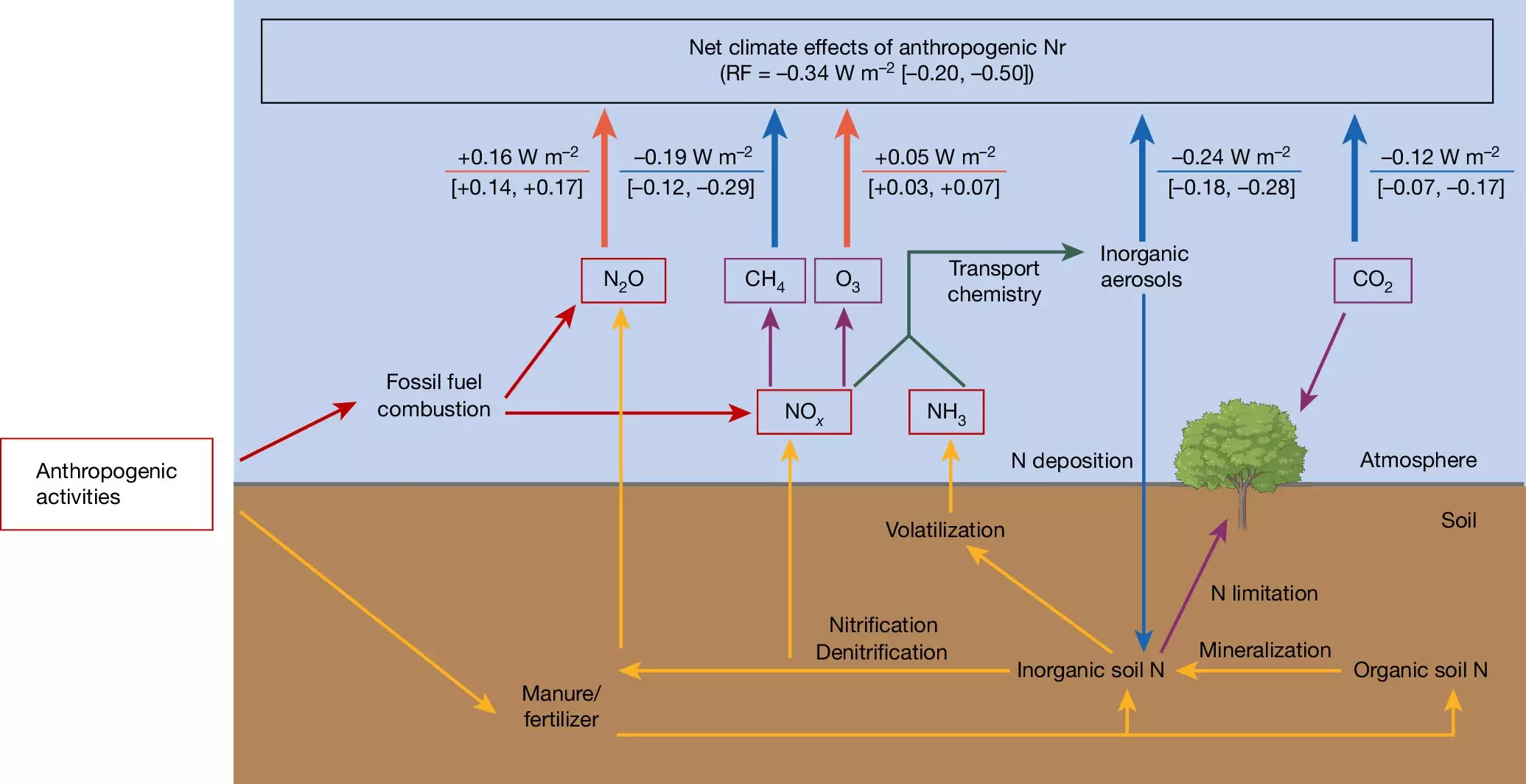Nitrogen plays a paradoxical role in our atmosphere and ecosystems, acting as both a boon for agricultural productivity and a potential harm to the climate. Though often viewed through a singular lens of environmental damage due to its role in air pollution, water contamination, and biodiversity loss, recent studies have shed light on its complex involvement with climate change. A comprehensive analysis led by scientists at the Max Planck Institute for Biogeochemistry highlights the nuanced reality that, while nitrogen fertilizers and nitrogen oxides are known for their environmental degradation, they might also exert a surprising cooling effect on our climate system.
This duality stems from nitrogen’s varied forms and compounds that exist within our natural systems. While elemental nitrogen comprises approximately 78% of the atmosphere and is entirely climate-neutral, the presence of reactive nitrogen compounds introduces a diverse array of climatic consequences. It is through these complexities that we see the full spectrum of nitrogen’s impact—sometimes promoting warming, while at other times facilitating cooling.
Reactive Nitrogen: The Australian Mirage
Nitrous oxide, a greenhouse gas primarily released through fossil fuel combustion and nitrogen-rich soil, exemplifies nitrogen’s warming attributes. With a potency nearly 300 times greater than carbon dioxide over a century, nitrous oxide poses substantial threats to the ozone layer. On the other hand, nitrogen oxides, resulting from fossil fuel use, have short atmospheric lifespans, yet they produce fine particulate matter that can help shield sunlight and consequently cool the planet. Ammonia, another nitrogen compound stemming from agricultural practices like the application of liquid fertilizers, can promote accelerated plant growth. This growth means enhanced CO2 absorption, contributing to a net cooling effect that complicates our understanding of nitrogen’s full climatic implications.
Researchers, including Sönke Zaehle and Cheng Gong, have dedicated themselves to unraveling this intricate dynamic, and their findings underscore a critical point: nitrogen compounds from human activity might actually cool the climate by around -0.34 watts per square meter. This revelation runs counter to simplistic narratives that framed nitrogen solely as a destructive force—clearly indicating that environmental interventions must be abundantly nuanced.
Climate Feedback Loops: A Tightly Woven Fabric
The interactions between various nitrogen compounds and their climatic effects could be likened to a tightly woven fabric, interlacing threads of ecology, atmospheric chemistry, and climate science. It is increasingly evident that the impact of reactive nitrogen cannot be determined without considering its broader context within the climate system. The models utilized by the researchers reveal that local effects can drive complex feedback loops which, in turn, affect global climate dynamics.
This discovery highlights a critical gap in previous research, which often overlooked the spatial variability and interconnected nature of reactive nitrogen within the environment. Gong emphasizes the need for a holistic approach when evaluating these processes. The intricate dance of nitrogen compounds requires further analysis that accounts for their global cycles rather than relying on fragmentary data that fail to grasp their far-reaching implications.
The Double-Edged Sword of Nitrogen Emissions
While the idea of nitrogen emissions exerting a cooling effect might tantalize some as a potential climate mitigation strategy, that could not be further from the truth. Zaehle sternly cautions against interpreting this finding as a justification for increasing nitrogen input. The adverse ramifications of nitrogen emissions extend far beyond climate, encompassing dire consequences for public health, biodiversity, and the integrity of the ozone layer.
Indeed, while it is beneficial to recognize nitrogen’s cooling effect, it cannot overshadow its damaging footprint. The imperative remains: we must prioritize reducing the anthropogenic inputs of nitrogen across the board. This task can be formidable but is vital for promoting sustainable agricultural practices that not only mitigate harmful emissions but also refresh our ecosystems. More efficient use of nitrogen as fertilizer stands as a robust opportunity to curtail the nitrous oxide emissions that contribute to climate change while simultaneously improving crop yields.
Moving Towards Sustainable Solutions
As we grapple with the dualities inherent in nitrogen’s role within our environmental systems, policymakers and researchers must work collaboratively to foster innovative practices that prioritize health and ecological stability over mere agricultural productivity. The emphasis on reducing nitrogen inputs aligns with the simultaneous necessity of cutting down on greenhouse gas emissions such as carbon dioxide and methane from fossil fuels.
In this balancing act, we hold the responsibility to combat climate change effectively while mitigating harmful nitrogen outputs. Strengthening our understanding of nitrogen’s complex relationships and impacts will be essential in steering humanity toward a more sustainable future—one where our farming practices and environmental policies work hand in hand for the health of the planet and future generations.


Leave a Reply